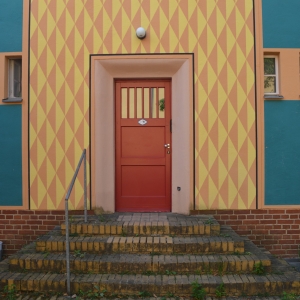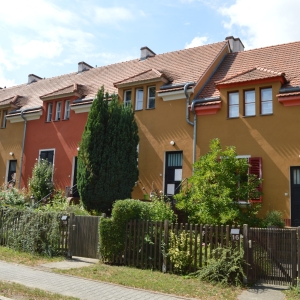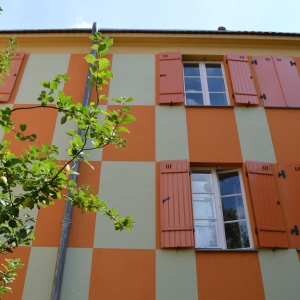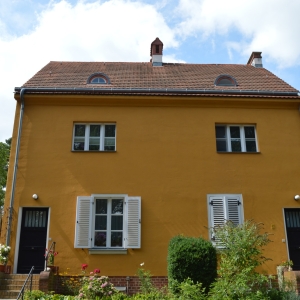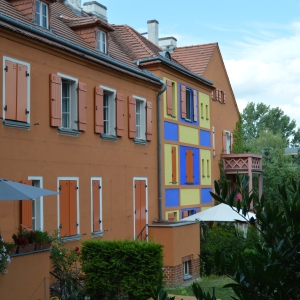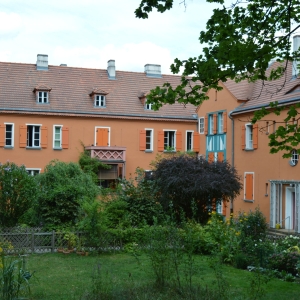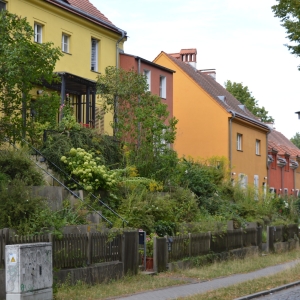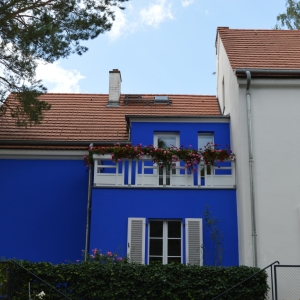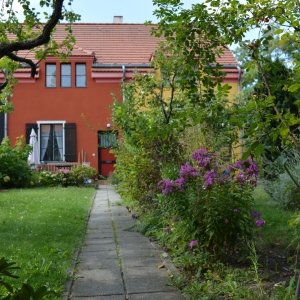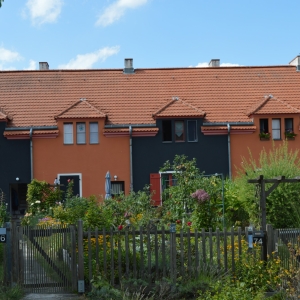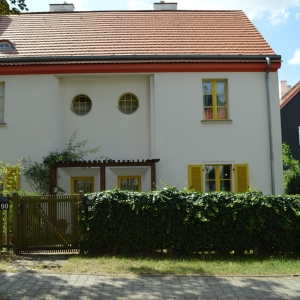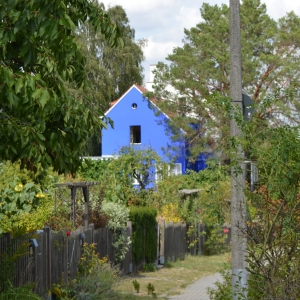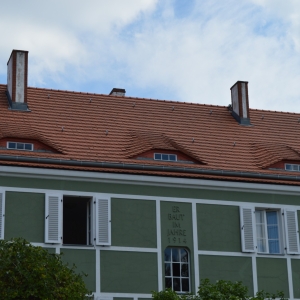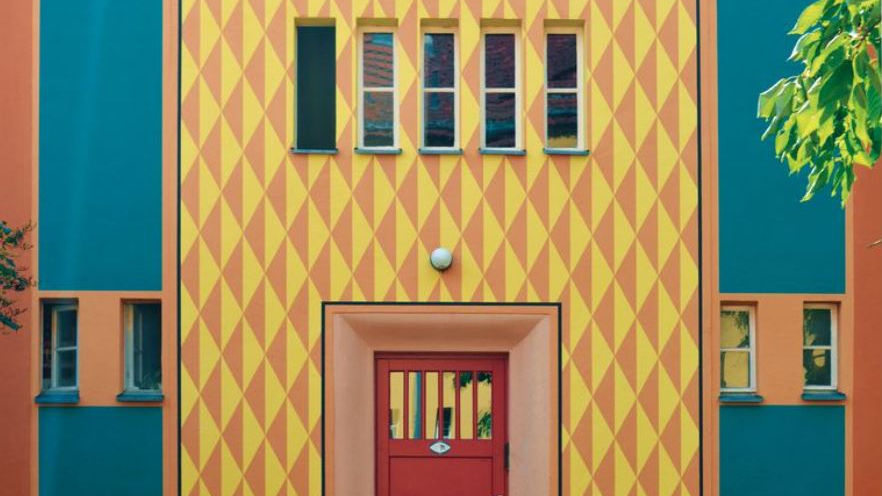
Gartenstadt Falkenberg
Berlin, Germany
Gartenstadt Falkenberg is one of the famous garden cities in Berlin with colourful houses made by Bruno Taut. In 2008 it was declared UNESCO World Heritage.
| Garden City Type: | Mixed (housing association / municipality / other) |
| Country: | Germany |
| City: | Berlin |
| Address: | Akazienhof, Gartenstadtweg, Am Falkenberg |
| Years of construction: |
1912 Start construction 1916 Completion
|
| Initiator/client: | Berliner Spar- und Bauverein (today: Berliner Bau- und Wohnungsgenossenschaft von 1892 eG) |
| Architect or related: |
Bruno Taut Bruno Julius Florian Taut (1880-1938) was a German architect and urban planner, who was responsible for pioneering colourful workers’ neighbourhoods and cities at the beginning of the twentieth century. Bruno Taut on Wikipedia | More on the exhibition Bruno Taut: Beyond Fantasy at Museum Het Schip (2021). |
| Heritage status: | Yes |
| Explanation: | In July 2008 Gartenstadt Falkenberg was was included in the UNESCO World Heritage List as one of six housing estates of Berlin Modernism. |
| General condition of Garden City: | Good condition |
General description
Gartenstadt Falkenberg is one of the famous garden cities in Berlin with colourful houses made by Bruno Taut. It lies in the Treptow-Köpenick district in the south-east of Berlin and is one of Taut's earliest designs.
Taut was commissioned by the Berliner Spar- und Bauverein (today: Berliner Bau- und Wohnungsgenossenschaft von 1892 eG) in 1912 to design a 75 hectare site. Initially around 1.500 homes were planned, but because of the war and limited finances only 128 dwellings in 21 buildings were realised in two construction phases.
Architecture / Urban planning
The garden city movement heavily influenced the design of Gartenstadt Falkenberg, but without the aim of economic self-sufficiency.
The example of English terraced houses was followed here, in combination with detached and semi-detached houses. Taut's remarkable use of bright colours as decoration earned Falkenberg the nickname Tuschkastensiedlung (paint box estate). It gave the seperate houses an individuality.
What was also remarkable for that time was the decision to hire renowned landscape architect Ludwig Lesser to design the estate’s gardens and public spaces. Each of the apartments had a garden, in size varying between 135 and 600 square metres.
Sources
- Website URL

